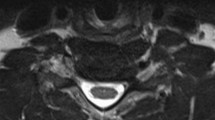Abstract
Purpose
The incidence of bite injuries associated with transcranial electrical stimulation motor-evoked potentials monitoring reportedly ranges from 0.13 to 0.19%. However, in clinical practice, bite injuries appear to occur more frequently than previously reported. Our aim was to identify the incidence of and perioperative risk factors associated with bite injuries caused by transcranial electrical stimulation motor-evoked potential monitoring.
Methods
Patients who underwent elective surgery with transcranial electrical stimulation motor-evoked potential monitoring at a single tertiary hospital in Japan between June 2017 and December 2017 were included in this study. All patients were assessed by oral surgeons preoperatively and postoperatively. The associated factors with bite injuries were explored by the univariate analysis.
Results
12 of 186 patients experienced 13 bite injuries, including three lip, six oral mucosa, and four tongue injuries. No patient required suture repair. 11 of 12 patients had uneventful postoperative courses and were cured within 12 postoperative days. One patient with a tongue ulcer and a hematoma had difficulty in oral intake and persistent dysgeusia. Patient severe movement during transcranial electrical stimulation motor-evoked potential monitoring was associated with bite injuries (p = 0.03).
Conclusions
The incidence of bite injuries assessed by oral surgeons was 6.5% in patients with transcranial electrical stimulation motor-evoked potential monitoring, and the patients with severe movement during the monitoring tended to incur bite injuries. In rare cases, transcranial electrical stimulation motor-evoked potential monitoring may cause difficulty in oral intake and dysgeusia.


Similar content being viewed by others
References
Deletis V, Sala F. Intraoperative neurophysiological monitoring of the spinal cord during spinal cord and spine surgery: a review focus on the corticospinal tracts. Clin Neurophysiol. 2008;119:248–64.
Motoyama Y, Kawaguchi M, Yamada S, Nakagawa I, Nishimura F, Hironaka Y, Park YS, Hayashi H, Abe R, Nakase H. Evaluation of combined use of transcranial and direct cortical motor evoked potential monitoring during unruptured aneurysm surgery. Neurol Med Chir (Tokyo). 2011;51:15–22.
MacDonald DB. Safety of intraoperative transcranial electrical stimulation motor evoked potential monitoring. J Clin Neurophysiol. 2002;19:416–29.
Tamkus A, Rice K. The incidence of bite injuries associated with transcranial motor-evoked potential monitoring. Anesth Analg. 2012;115:663–7.
Schwartz DM, Sestokas AK, Dormans JP, Vaccaro AR, Hilibrand AS, Flynn JM, Li PM, Shah SA, Welch W, Drummond DS, Albert TJ. Transcranial motor evoked potential monitoring in spine surgery: is it safe? Spine. 2011;36:1046–9.
Kakimoto M, Kawaguchi M, Yamamoto Y, Inoue S, Horiuchi T, Nakase H, Sakaki T, Furuya H. Tetanic stimulation of the peripheral nerve before transcranial electrical stimulation can enlarge general anesthesia with neuromuscular blockade. Anesthesiology. 2005;102:733–8.
Yamamoto Y, Kawaguchi M, Hayashi H, Horiuchi T, Inoue S, Nakase H, Sakaki T, Furuya H. The effects of the neuromuscular blockade levels on amplitudes of posttetanic motor-evoked potentials and movement in response to transcranial stimulation in patients receiving propofol and fentanyl anesthesia. Anesth Analg. 2008;106:930–4.
Mahmoud M, Spaeth J, Sadhasivam S. Protection of tongue from injuries during transcranial motor-evoked potential monitoring. Paediatr Anaesth. 2008;18:902–3.
Oshita K, Saeki N, Kubo T, Abekura H, Tanaka N, Kawamoto M. A novel mouthpiece prevents bite injuries caused by intraoperative transcranial electric motor-evoked potential monitoring. J Anesth. 2016;30:850–4.
Author information
Authors and Affiliations
Corresponding author
Ethics declarations
Conflict of interest
The authors have no conflicts of interest to declare.
About this article
Cite this article
Yata, S., Ida, M., Shimotsuji, H. et al. Bite injuries caused by transcranial electrical stimulation motor-evoked potentials’ monitoring: incidence, associated factors, and clinical course. J Anesth 32, 844–849 (2018). https://doi.org/10.1007/s00540-018-2562-0
Received:
Accepted:
Published:
Issue Date:
DOI: https://doi.org/10.1007/s00540-018-2562-0




